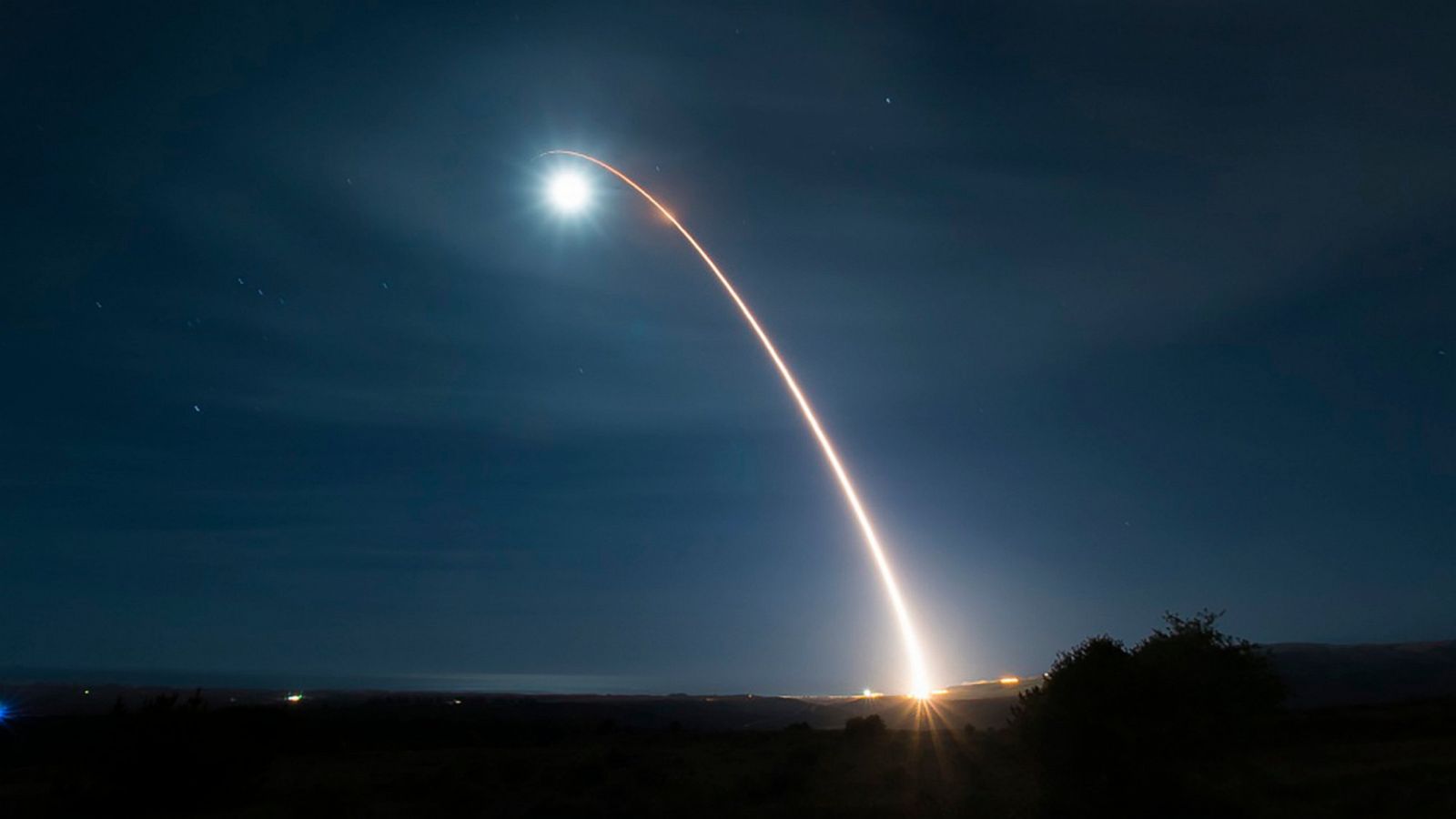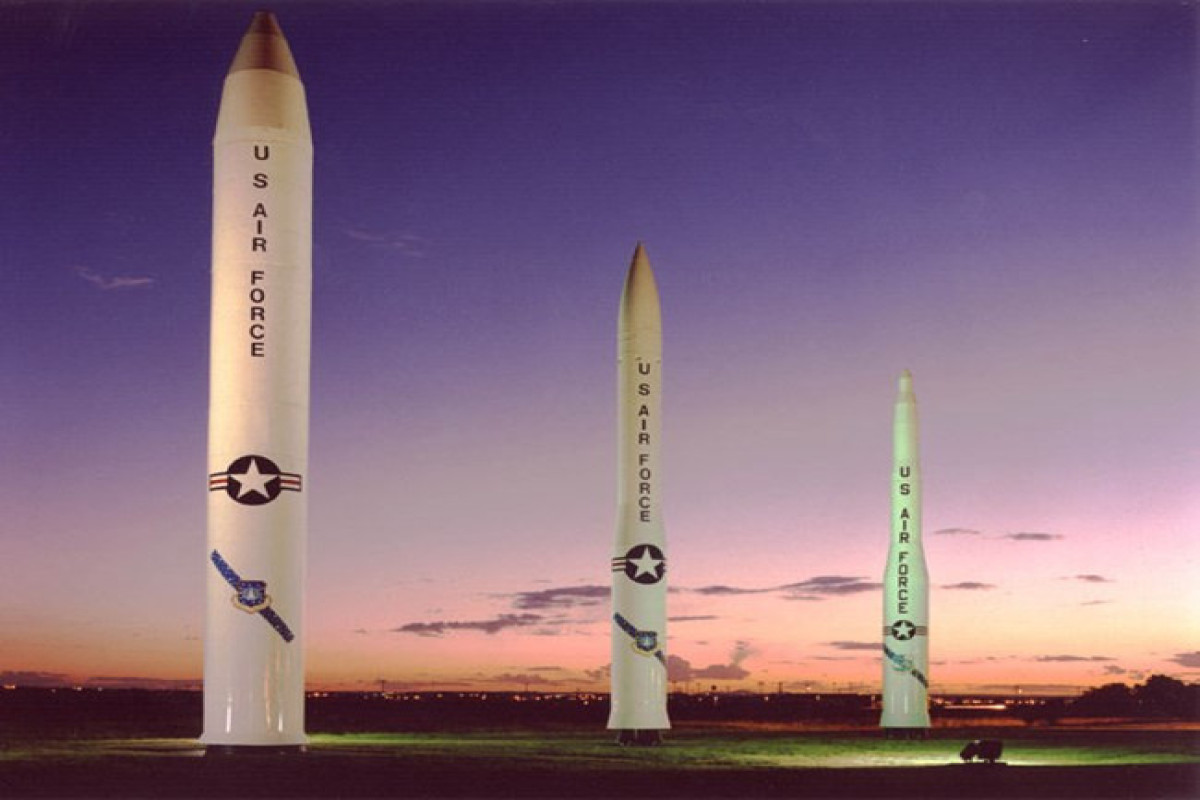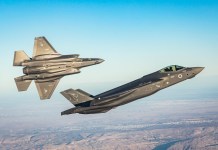The scheduled test firing of the unarmed Minuteman-III Intercontinental Ballistic Missile (ICBM) on Tuesday from the Vandenberg Space Force Base came when the debate between the 1960-era missile and the new $13 billion ICBM – Ground-Based Strategic Deterrent (GBSD) got settled in favor of the latter.
Northrop Grumman was awarded a contract in September 2020 to develop the GBSD and christened the LGM-35A Sentinel.

For years, military, strategic, political, and scientific leadership argued against the GBSD, citing the prohibitive costs and the risk of nuclear escalation.
Interestingly, two earlier planned tests of the Minuteman III, in March and earlier this month, were postponed to prevent sending wrong signals to Russia and China.
Russia was at the peak of its military offensive in Ukraine, and China had kicked off massive military drills around Taiwan following speaker Nancy Pelosi’s visit.
The test was routine, announced a day prior, and is required under the New Strategic Arms Reduction Treaty (START or New START) with Russia, with 300 such launches. That there was no corresponding maneuver, retaliatory move, or statement objecting to the test from Russia or China means they were comfortable with it.

Clarifying the test was “not the result of current world events,” the US Air Force Global Strike Command said the missile carried a test re-entry vehicle that traveled 6759 kilometers to the Kwajalein Atoll in the Marshall Islands.
“This test launch is part of the routine and periodic activities intended to demonstrate that the United States’ nuclear deterrent is safe, secure, reliable, and effective to deter twenty-first-century threats and reassure our allies. Such tests have occurred more than 300 times before,” the AFGSC said.
Does The US Need Ground-Based ICBMs?
The Minuteman is a part of the nuclear triad of nuclear-tipped missiles carried and fired by nuclear-powered and armed submarines (SSBNs), USAF bombers like the B-2 Spirit, and underground nuclear silos spread across the continental United States.
These three ‘holders’ of nuclear missiles ensure ‘survivability,’ where a nuclear strike does not disable a country’s nuclear arsenal that would prevent it from launching a retaliatory strike.
This, therefore, ‘deters’ a nation from ever carrying out such an attack in the first place, with both nations’ triads checking each other, baring the inherent check and balance in nuclear strategy. The double-edged sword, put differently, both ensures stability and could also be a cause of instability.
And this is where the first argument against the GBSD rests, which counters the ‘sponge theory’ forwarded by proponents of the GBSD.
The argument is that the existence of 450 underground missile silos would force Russia to use multiple nuclear weapons to destroy each US ICBM in an attack, for which it would need at least 900 warheads out of the approximately 1,600 it has deployed.
This would leave the US with undetectable and unharmed air and undersea assets to retaliate. However, Garrett Hinck and Pranay Vaddi argue in ‘War on the Rocks’ that Russian leaders would not be discouraged by the prospect of the United States being left with more survivable missiles.
“Instead, they probably would assume that both sides would be launching everything they have at each other,” their article said.
Moreover, assuming that following a general nuclear exchange, there still is military and political scope for another round of attacks, both nations’ societies and infrastructure will have been utterly devastated.
“That’s why Russian leaders are unlikely to attempt a first strike against the United States in the first place, which is why the United States does not need ICBMs,” they added.
Secondly, 70% of the US’s deployed nuclear force is on their 14 SSBNs and stealth bombers, which are extremely hard to detect in general and difficult to destroy simultaneously.
A nuclear attack by any country is less likely to be sudden, out-of-the-blue, but rather a result of an escalating politico-strategic crisis where war has been deemed inevitable.
Between two nuclear powers, even the nuclear forces are readied, and thus stealthy SSBNs and nuclear bombers will have sailed/taken off from their bases, making them even harder to target.
The US SSBN force is the most advanced in the world, maintaining a slight edge over Russia in propulsion technologies and a far greater lead than China, which has only begun to catch up.
Of the 14 US SSBNs, eight to nine are usually at sea, of which four to five could be put on a hard alert to fire immediately.
It is complicated to track quiet, stealthy submarines, making locating and tracking each US submarine impossible. The number of naval and air assets like maritime patrol aircraft (MPA), anti-submarine warfare (ASW) ships, helicopters, and other submarines would put enormous strain on the adversary navy. The US military itself can tactically exploit this.
It is a different matter that proponents of land-based ICBMs have often been driven by undermining the US Navy’s capability in nuclear launch and deterrence, as was noted in the 1993 Government Accountability Office (GAO) report.
“Unsubstantiated allegations about likely future breakthroughs in Soviet submarine detection technologies, along with underestimation of the performance and capabilities of our own nuclear-powered ballistic missile submarines” are “used frequently as a justification for costly modernizations in the other legs to ‘hedge’ against SSBN vulnerability,” the report said.
Modernising the Minuteman III
Kingston Reif and Steve Fetter, in a 2019 WOTR article, point out how replacing the solid rocket propellant and guidance systems and reducing ‘destructive testing’ – like the latest firing – can ensure their survivability at least for the next three decades until the 2050s.
Moreover, the overall force of the ICBMs themselves can be reduced if the US simply enters arms reduction and nuclear control pacts with Russia and China.
The US left a series of treaties like the 1972 Anti-Ballistic Missile Treaty (ABMT) in 2002; has refused to ratify the Comprehensive Test Ban Treaty (CTBT); abrogated the Intermediate-Range Nuclear Forces (INF) Treaty in August 2019, and; exited the Open Skies Treaty in May 2021 with Russia, which sparked a series of arms races and the overall global instability.
The fortune spent on the GBSD could have been used to modernize other wanting areas of the US military, which its military leaders admit is at a severe disadvantage before Russia and China.
- The author can be reached at satamp@gmail.com
- Follow EurAsian Times on Google News





